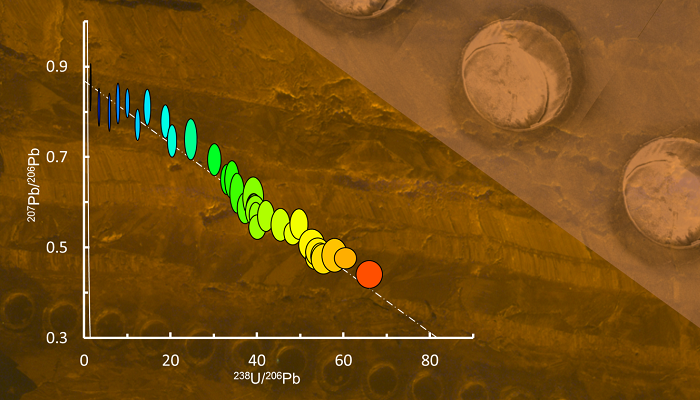

Credit: Nick Roberts
For this edition of Minds over Methods, we have invited Nick Roberts, a research scientist at the British Geological Survey, working within the Geochronology and Tracers Facility (GTF) running a LA-ICP-MS laboratory. Nick has a background in ‘hard-rock’ geology, incorporating geochemistry, geochronology, and magmatic and metamorphic petrology across a wide range of tectonic settings, and is now involved in projects covering a breadth of earth system science, from Archean ore deposits to early hominid evolution. Nick is experienced in developing LA-ICP-MS U-Pb methods. He was involved in the first characterisation of a natural carbonate for use as a reference material, and in demonstrating the applicability of LA-ICP-MS U-Pb carbonate geochronology to a number of key applications, such as dating brittle deformation, ocean crust alteration, and paleohydrology.
Faults and fractures are ubiquitous in the Earth’s upper crust. As well as providing deformation histories of basins and orogens, they are critical for understanding the formation, migration and storage of natural resources. Determining the absolute timing of fault slip and fracture opening has lacked readily available techniques. Most existing methods require specific fault gouge mineralogy that is not always present, e.g. K-Ar illite dating. Other methods require a specific composition of fault-hosted mineralisation, e.g. U-Th/He dating of hematite, Th-Pb dating of hydrothermal monazite, U-Pb/U-Th dating of opal, and U-Pb/U-Th dating of carbonate. The latter is the most widely applicable, since carbonate minerals (e.g. calcite, dolomite) are common to many fault and fracture systems throughout a wide range of geological settings. The ability to date carbonate mineralisation with the popular method of U-Pb Laser Ablation Inductively Coupled Mass Spectrometry (LA-ICP-MS), is opening up new doors in tectonics and structural geology.
The method
The key to the LA-ICP-MS method is its high spatial resolution (~20-200 microns); the method involves sampling of material with a laser and measuring the composition of that material with an ICP-MS. Uranium concentrations in carbonate are low when compared to most other U-Pb chronometers, typically 10 ppb to 10 ppm, which is one or two orders less than a typical zircon. Uranium concentration, particularly in vein-filling calcite, can also be highly variable within in a single sample, spanning orders of magnitude over length-scales of 10s of microns or less. A major benefit of LA-ICP-MS dating, is that this variation in composition can be targeted and sampled with the laser, which can lead to precise age estimates through measurement of wide-ranging U/Pb ratios (see example in Figure 1). High uranium zones can also be rather elusive and searching for a needle in a haystack is often an appropriate analogy. Another benefit of LA-ICP-MS is that many samples can be screened in a single session, to select those of the most favourable composition for dating, and to find within those samples the regions with highest U. The method can be utilised on polished thick sections or blocks, or chips or grains mounted in epoxy-resin blocks. This in situ technique makes it highly versatile and allows for complementary analysis that are crucial for providing context to the dates, such as cathodoluminescence, optical microscopy, trace element mapping, and in-situ Sr isotope analyses.
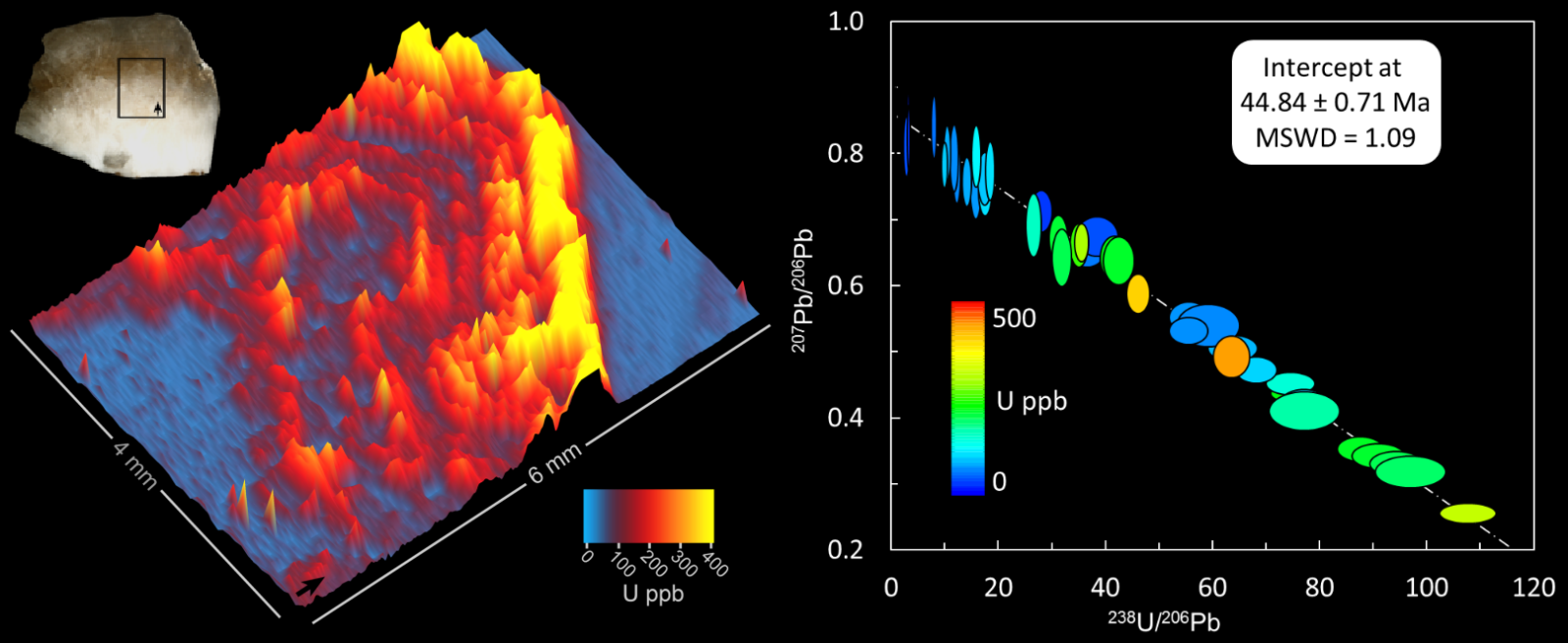
Figure 1. Example of vein-filling calcite with LA-ICP-MS elemental map of uranium, and corresponding U-Pb concordia (Tera-Wasserburg) plot from LA-ICP-MS U-Pb spot analyses across the same region. Credit: Nick Roberts
Dating deformation
Carbonate, primarily calcite, occurs as vein-filling mineralisation in fractures and along fault planes (see Figure 2 for examples). Such occurrences of carbonate have precipitated from a fluid, and thus, provide a record of past fluid-flow. Carbonate vein-fill can also be used to provide absolute timing constraints on brittle deformation. Carbonate that infills a fracture provides a minimum age for the timing of fracture opening. Many fractures and fault planes exhibit multiple opening and/or slip events that lead to multiple episodes of carbonate precipitation. From these, carbonate dates can be used to bracket the timing of fault slip, and potentially provide constraints on the longevity and periodicity of fault slip events.
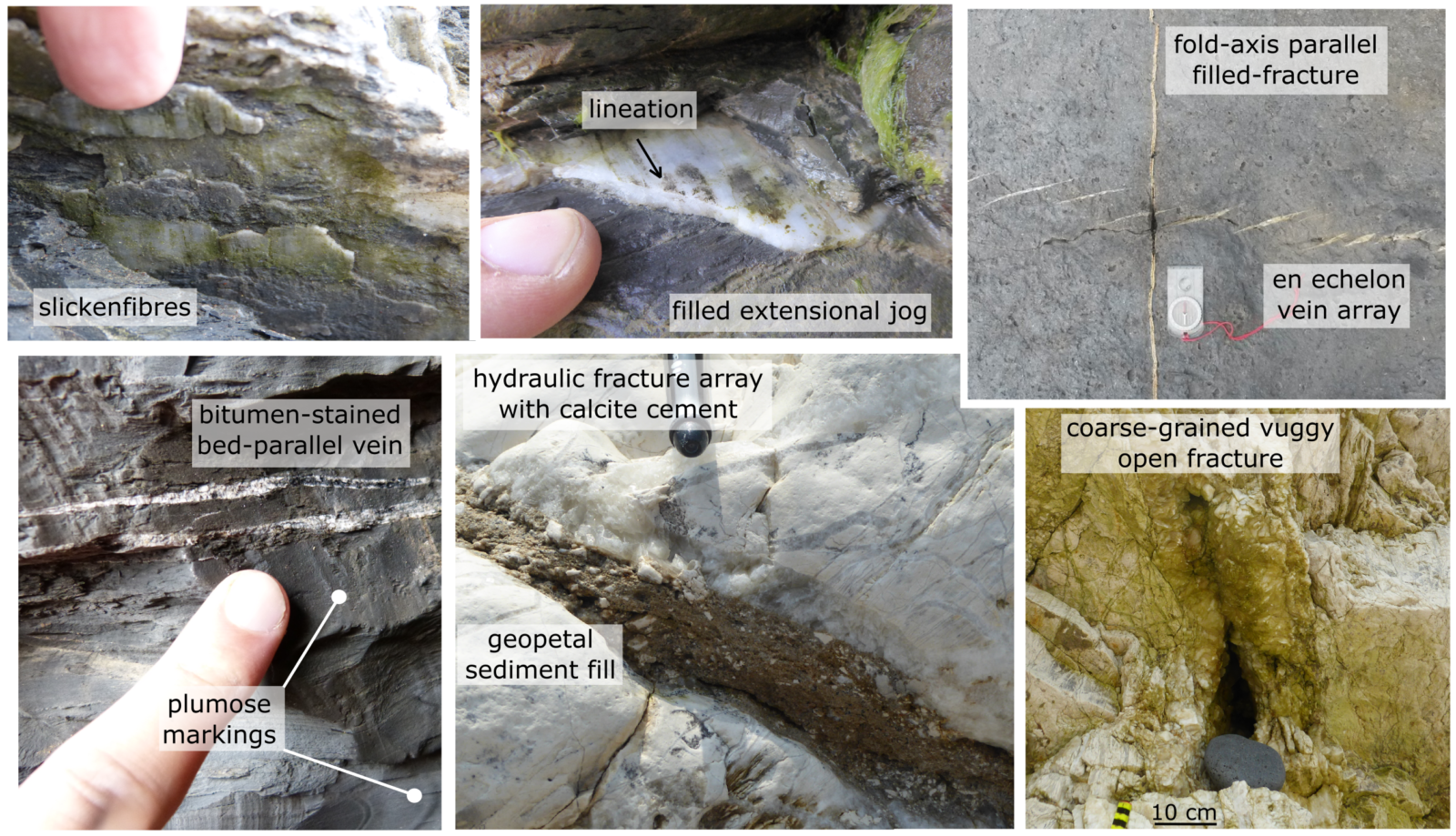
Figure 2. Examples of calcite vein-fill in various faults and fracture types. Credit: Nick Roberts and Jonny Imber
Good dates need good petrography
The key to dating fault slip and fracture opening is detailed petrography. Vein mineralisation takes on a wide variety of growth textures, and these can used to infer the history of mineral precipitation as well as fault kinematics. For example, veins may exhibit syntaxial (growth from the margin towards the centre), antitaxial (growth from the centre towards the margin) or with no preferred growth direction. Calcite morphologies are wide-ranging, from flattened, to blocky, to elongate, to fibrous (see example in Figure 3). Calcite can also exhibit deformation twinning which can be used to infer the strain regime. These textures and morphologies, along with features such as inclusion trails, shear bands and healed fractures, allow us to interpret the combined history of fracture opening, displacement and fluid precipitation.

Figure 3. Example of a complex calcite fracture-fill from a mudstone-hosted normal fault, showing cathodoluminescence and reflected light imaging, schematic textural interpretation, LA-ICP-MS trace element mapping, and a simple model of vein evolution. Credit: Nick Roberts
Carbonate – a treasure trove of geochemical proxies
One of the key benefits to dating carbonate mineralisation, is that its elemental and isotopic composition provides a wide-ranging archive of fluid chemistry and temperature. Traditional methods include stable carbon and oxygen isotopes and radiogenic Sr isotopes; these provide information on the source of fluids and allow the characterisation of subsurface fluid pathways. Trace elements provide further information on fluid source and rock-fluid interaction and are particularly useful for characterising proxies such as the reducing potential of precipitating fluids. Clumped isotopes are a novel method that has been explored over the last decade and provide a proxy for the fluid temperature during carbonate precipitation. In combination with U-Pb dating, clumped isotopes can characterise ancient hydrothermal fluid-flow in the upper crust (MacDonald et al., 2019). A benefit of LA-ICP-MS geochronology, is that various in-situ methods can be combined, allowing fluid composition and dating to be analysed from the same domain. For example, carbon and oxygen isotopes can be measured in situ using an ion microprobe, and Sr isotopes and trace elements can be measured using LA-ICP-MS.
Application to tectonics
To date, LA-ICP-MS carbonate geochronology has been applied successfully to a range of tectonic settings to constrain the timing of brittle deformation. These include the far-field effects of the Pyrenean orogeny in southern England (Parrish et al., 2018) and Alpine orogeny in Sweden (Goodfellow et al., 2018), rift-related faulting during opening of the North Atlantic in the Faroe Islands (Roberts & Walker, 2016), graben formation in the Alpine orogen (Ring & Gerdes, 2016), the timing of the Dead Sea and North Anatolian transform fault zones (Nuriel et al., 2017 and 2019, respectively), nappe stacking in the Arabian Peninsula (Hansman et al., 2018), foreland deformation of Sevier-Laramide orogenesis (Beaudoin et al., 2018) and brittle deformation within an accretionary wedge (Smeraglia et al., 2019).
Edited by Derya Gürer
References
Beaudoin, N., Lacombe, O., Roberts, N.M. and Koehn, D., 2018. U-Pb dating of calcite veins reveals complex stress evolution and thrust sequence in the Bighorn Basin, Wyoming, USA. Geology, 46(11), pp.1015-1018.
Goodfellow, B.W., Viola, G., Bingen, B., Nuriel, P. and Kylander‐Clark, A.R., 2017. Palaeocene faulting in SE Sweden from U–Pb dating of slickenfibre calcite. Terra Nova, 29(5), pp.321-328.
Hansman, R.J., Albert, R., Gerdes, A. and Ring, U., 2018. Absolute ages of multiple generations of brittle structures by U-Pb dating of calcite. Geology, 46(3), pp.207-210.
MacDonald, J.M., Faithfull, J.W., Roberts, N.M.W., Davies, A.J., Holdsworth, C.M., Newton, M., Williamson, S., Boyce, A. and John, C.M., 2019. Clumped-isotope palaeothermometry and LA-ICP-MS U–Pb dating of lava-pile hydrothermal calcite veins. Contributions to Mineralogy and Petrology, 174(7), p.63.
Nuriel, P., Craddock, J., Kylander-Clark, A.R., Uysal, I.T., Karabacak, V., Dirik, R.K., Hacker, B.R. and Weinberger, R., 2019. Reactivation history of the North Anatolian fault zone based on calcite age-strain analyses. Geology, 47(5), pp.465-469.
Nuriel, P., Weinberger, R., Kylander-Clark, A.R.C., Hacker, B.R. and Craddock, J.P., 2017. The onset of the Dead Sea transform based on calcite age-strain analyses. Geology, 45(7), pp.587-590.
Parrish, R.R., Parrish, C.M. and Lasalle, S., 2018. Vein calcite dating reveals Pyrenean orogen as cause of Paleogene deformation in southern England. Journal of the Geological Society, 175(3), pp.425-442.
Ring, U. and Gerdes, A., 2016. Kinematics of the Alpenrhein‐Bodensee graben system in the Central Alps: Oligocene/Miocene transtension due to formation of the Western Alps arc. Tectonics, 35(6), pp.1367-1391.
Roberts, N.M. and Walker, R.J., 2016. U-Pb geochronology of calcite-mineralized faults: Absolute timing of rift-related fault events on the northeast Atlantic margin. Geology, 44(7), pp.531-534.
Smeraglia, L., Aldega, L., Billi, A., Carminati, E., Di Fiore, F., Gerdes, A., Albert, R., Rossetti, F. and Vignaroli, G., 2019. Development of an Intrawedge Tectonic Mélange by Out‐of‐Sequence Thrusting, Buttressing, and Intraformational Rheological Contrast, Mt. Massico Ridge, Apennines, Italy. Tectonics, 38(4), pp.1223-1249.

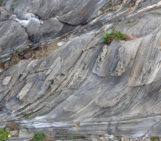
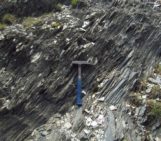
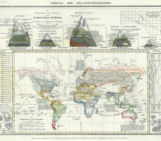
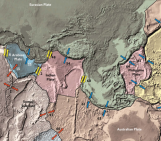
Pradipta Sengupta
Dear Author,
A fantastic article and undoubtedly extremely useful to date a deformation event i.e. Fault. The author has given a new dimension to date a tectonic events from geochemical methods. I just want to know this U-Pb/ U-Th carbonate geochronology can only be done from calcite vein infilling as suggested by the author or it is possible for other fault zone rocks . In case of a series of faulting and reactivation of earlier faults how this method is useful to correlate all the deformation. Vug fill calcite deposits in Limestone resides not in a fault plane can be used as proxies?
Thank you.
Regards,
Pradipta Sengupta
Geologist
Geological Survey of India